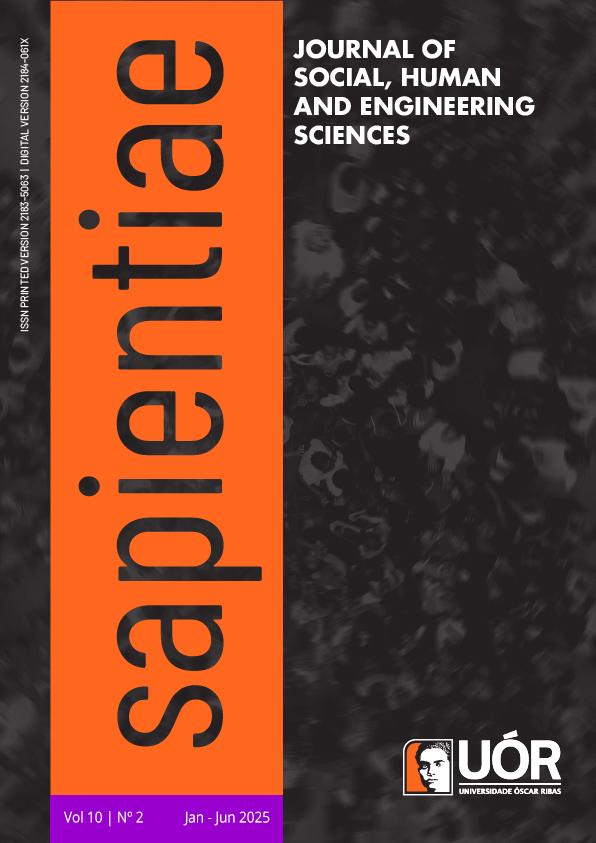The presence of racism in the Native American Apache ethnic group; Silver City, New Mexico, USA
DOI:
https://doi.org/10.37293/sapientiae102.06Keywords:
Racism, discrimination, Apache ethnic groupAbstract
The importance of the issue of racism present in the apache ethnic group is of great relevance due to the sense of urgency that the ways in which racism is represented must be made visible. The research offers relevance because it makes visible the current situation of the representations of racism, due to the importance of the apache culture it becomes relevant; since there is a shortage of studies directly related to the topic and the ethnic group, the justification of the research is the contribution of knowledge of the presence and forms of racism; It stands out that the most predominant is due to its color, without leaving aside education, ethnicity, language, culture, religion, sacred ceremonies, social classes and ranks, technological changes, among other forms of representation. The main objective is to determine the ways in which racism occurs among the original Apache settlers. The methodology applied is under the qualitative approach, with an ethnographic method, grounded theory is used; The study is conducted in Silver City, New Mexico, USA. with the support of Western New Mexico University, during an academic stay carried out by the author in May 2018. Finally, the results are presented that show the presence of racism in its different forms such as language, origin, sacred ceremonies, education and lack of inclusion in the study programs of the times that the ethnic group requires for its sacred ceremonies; The conclusions are presented, establishing lines of research for future studies.
References
Baronnet, B. (2009). Autonomía y educación indígena: las escuelas Zapatistas de las Cañadas de la selva Lacandona de Chiapas, México. El Colegio de México. https://www.proquest.com/openview/2bc900c02d305581c93e79c257e5a5c0/1?pq-origsite=gscholar&cbl=18750&diss=y
Carbonell, F. (1999). III. Desigualdad social, diversidad cultural y educación. España. https://recursos.we-know.net/assets/bloques/CARBONELL_desigualdad.pdf
Debo, A. (1890). Geronimo: The man, his time, his place. Vol. 142. University of Oklahoma Press.
Fanon, F. (2023). Black skin, white masks. In Social theory re-wired (pp. 355-361). Routledge. https://icamiami-org.storage.googleapis.com/2018/09/ae77b7fa-fanon_frantz_black_skin_white_masks_1986.pdf
Grosfoguel, R. (2012). El concepto de «racismo» En Michel Foucault y Frantz Fanon: teorizar desde la zona del ser o desde la zona del no-ser. Tábula rasa, (16), 79-102. http://www.scielo.org.co/pdf/tara/n16/n16a06.pdf
Hutton, P.A. (2016). The Apache Wars: The Hunt for Geronimo, the Apache kid, and the captive boy who started the longest war in american history. Broadway Books.
Lieder, M., Page J. (1997). Wild Justice: The People of Geronimo vs. the United States. Random House Incorporated.
Maldonado-Torres, N. (2007). Frantz Fanón: Filosofía poscontinental y cosmopolitismo descolonial, Nelson Maldonado-Torres. De la Teoría Crítica a una crítica plural de la modernidad, 147. https://books.google.es/books?hl=es&lr=&id=pz_gNDgqe_sC&oi=fnd&pg=PA147&dq=Maldonado-Torres,+N.+(2007).+Frantz+Fan%C3%B3n:+Filosof%C3%ADa+poscontinental+y+cosmopolitismo+descolonial,+Nelson+Maldonado-Torres.+De+la+Teor%C3%ADa+Cr%C3%ADtica+a+una+cr%C3%ADtica+plural+de+la+modernidad,+147.&ots=lqUEfQe0HJ&sig=IT4oBOiz-fVvxW-a9OjGdpsWPk0#v=onepage&q&f=false
Rachlis , E. (1960). Indians of the Plains. New York: American Heritage Publishing Co.
Sandoval, E. A., Guerra, E., & Ruiz, F. (2012). Etnorregión yoreme en el norte de Sinaloa. E. México.
UNESCO (1948). Organización de las Naciones Unidas para la Educación, la Ciencia y la Cultura. La Declaración Universal de los Derechos Humanos. Paris, Francia. https://www.un.org/es/about-us/universal-declaration-of-human-rights#:~:text=Art%C3%ADculo%2019,por%20cualquier%20medio%20de%20expresi%C3%B3n
UNESCO (2022). Organización de las Naciones Unidas para la Educación, la Ciencia y la Cultura, Día Mundial de la Diversidad Cultural para el Diálogo y el Desarrollo, Ciudad de México. https://www.un.org/es/observances/cultural-diversity-day#:~:text=La%20Declaraci%C3%B3n%20Universal%20de%20la,249%20de%20diciembre%20de%202002
Velasco Cruz, S. (2015). Racism and education in Mexico. Revista mexicana de ciencias políticas y sociales, 61(226), 379-407. https://www.scielo.org.mx/pdf/rmcps/v61n226/0185-1918-rmcps-61-226-00379.pdf
Velazquez, M.D.C. (1974). Los Apaches y su leyenda. Historia Mexicana, 161 – 176. El Colegio de México. https://www.jstor.org/stable/25135448
Yudell, M., & Aguilar, P. (2014a). Breve historia del concepto de raza. Pasajes, 44, 32–47. http://www.jstor.org/stable/pasajes.44.32
Yudell, M. (2014b). Race unmasked: Biology and race in the twentieth century. Columbia University Press. https://www.jstor.org/stable/10.1086/683707?read-now=1#page_scan_tab_contents
Downloads
Published
Issue
Section
License
Copyright (c) 2025 Elvira Martínez Salomón

This work is licensed under a Creative Commons Attribution-NonCommercial-ShareAlike 4.0 International License.
The content of the publications are of absolute responsibility of the authors and not of the Oscar Ribas University or the SAPIENTIAE Journal. The Journal allow the author(s) to hold the copyright of the papers.
This journal is Creative Commons Attribution-NonCommercial-ShareAlike 4.0 International.


